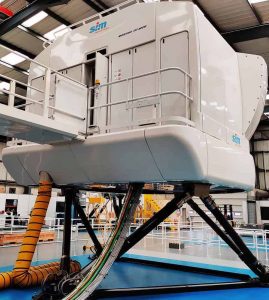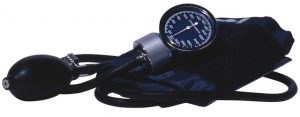Navigating Adverse Weather Conditions For A Safe Flight
 Adverse weather conditions pose significant challenges to flight operations, requiring pilots to possess advanced skills and knowledge to navigate them safely. The Multi-Crew Cooperation (MCC) course is a vital training program that equips pilots with the necessary tools to handle these challenges effectively. This in-depth guide explores the various adverse weather conditions that can impact flight safety, including thunderstorms, turbulence, and icing conditions, and how the MCC course prepares pilots to manage these situations.
Adverse weather conditions pose significant challenges to flight operations, requiring pilots to possess advanced skills and knowledge to navigate them safely. The Multi-Crew Cooperation (MCC) course is a vital training program that equips pilots with the necessary tools to handle these challenges effectively. This in-depth guide explores the various adverse weather conditions that can impact flight safety, including thunderstorms, turbulence, and icing conditions, and how the MCC course prepares pilots to manage these situations.
Adverse weather conditions
Adverse weather conditions can significantly impact the safety and efficiency of flight operations. Pilots must be adept at identifying and responding to these conditions to ensure safe and smooth flights. The MCC course focuses on enhancing pilots’ abilities to work as a team, communicate effectively, and make informed decisions under pressure.
1) Thunderstorms
Thunderstorms are among the most dangerous weather phenomena for aircraft. They can cause severe turbulence, lightning strikes, hail, and wind shear, all of which pose serious risks to flight safety.
Characteristics of thunderstorms
-
- Cumulonimbus clouds: Thunderstorms are characterised by towering cumulonimbus clouds, which can reach altitudes of over 60,000 feet.
- Updrafts and downdrafts: These clouds contain strong updrafts and downdrafts, creating turbulent conditions that can be hazardous to aircraft.
- Lightning: Thunderstorms produce lightning, which can cause electrical malfunctions and structural damage if an aircraft is struck.
- Hail: Hailstones formed within thunderstorms can severely damage aircraft surfaces and engines.
- Wind shear: Sudden changes in wind speed and direction, known as wind shear, are common near thunderstorms and can lead to loss of control.
Thunderstorm avoidance techniques
-
- Weather radar: Pilots use weather radar to detect thunderstorms and assess their severity. The MCC course trains pilots to interpret radar data and make informed decisions on avoiding storm cells.
- Route planning: Effective route planning is crucial for avoiding thunderstorms. Pilots learn to adjust flight paths based on real-time weather information.
- Altitude management: Flying at altitudes above or below the storm can help avoid turbulence and other hazards associated with thunderstorms. Pilots are trained to adjust altitudes appropriately while maintaining safe separation from other aircraft.
2) Turbulence
Turbulence is a common occurrence in flight, caused by irregular air movements that create bumps and jolts. It can range from mild to severe and poses risks to both aircraft and passengers.
Types of turbulence
-
- Clear air turbulence (CAT): Occurs at high altitudes, typically near the jet stream. It is difficult to detect and can cause sudden and severe bumps.
- Mechanical turbulence: Caused by airflow over terrain features like mountains or buildings. It is more common at lower altitudes.
- Thermal turbulence: Results from rising warm air and is commonly experienced during takeoff and landing on hot days.
- Wake turbulence: Generated by the vortices created by an aircraft’s wings. It can pose a significant risk to following aircraft, especially during takeoff and landing.
Turbulence management techniques
-
- Seatbelt usage: Ensuring passengers are seated with seatbelts fastened during turbulent conditions is a primary safety measure. The MCC course emphasises the importance of clear communication and timely advisories to passengers.
- Speed adjustments: Pilots are trained to adjust airspeed to minimize the impact of turbulence. This involves flying at turbulence penetration speed (Vb) to reduce stress on the aircraft.
- Altitude changes: Changing altitude can help pilots find smoother air. The MCC course teaches pilots how to coordinate with air traffic control to make altitude adjustments safely.
- Route diversions: Pilots may need to alter their route to avoid areas of known turbulence. The course includes training on how to assess weather reports and make route changes accordingly.
3) Icing conditions
Icing occurs when supercooled water droplets freeze upon contact with the aircraft’s surfaces. It can increase drag, reduce lift, and affect the functionality of critical systems.
Types of aircraft icing
-
- Rime ice: Forms when small droplets freeze rapidly, creating a rough, milky white ice. It typically forms on the leading edges of wings and control surfaces.
- Clear ice: Develops from larger water droplets that spread out before freezing, creating a smooth, transparent layer. It is heavier and more dangerous than rime ice.
- Mixed ice: A combination of rime and clear ice, often forming in clouds with varying droplet sizes.
Icing conditions and effects
-
- Aerodynamic impact: Ice alters the shape of the wing and control surfaces, leading to decreased lift and increased drag. This can affect the aircraft’s ability to climb, descend, and manoeuvre.
- Instrument malfunction: Ice can block pitot tubes, static ports, and other sensors, leading to inaccurate instrument readings.
- Engine performance: Ice can form on engine intakes and components, reducing airflow and potentially causing engine failure.
Icing management techniques
-
- Anti-icing systems: Pilots use anti-icing systems, such as heated surfaces and chemical de-icing fluids, to prevent ice formation. The MCC course covers the operation and limitations of these systems.
- Flight path adjustments: Avoiding known icing conditions by changing altitude or route is a key strategy. Pilots learn to interpret weather reports and adjust flight plans to steer clear of areas with high icing potential.
- De-icing procedures: On the ground, de-icing procedures are essential before takeoff. Pilots are trained to ensure proper application of de-icing fluids and to conduct thorough pre-flight checks to confirm all critical surfaces are clear of ice.
MCC Course: Training pilots to navigate adverse weather conditions
The MCC course is designed to enhance a pilot’s ability to work effectively as part of a multi-crew environment. It focuses on communication, coordination, and decision-making skills that are crucial when dealing with adverse weather conditions.
Teamwork and communication
-
- Crew resource management (CRM): CRM is a core component of the MCC course. It teaches pilots how to utilize all available resources, including other crew members, to manage challenging situations. Effective communication and teamwork are emphasised to ensure all crew members are on the same page during adverse weather conditions.
- Briefings and debriefings: Regular briefings and debriefings help crews to prepare for and analyze flight operations. These sessions are crucial for discussing potential weather-related issues and strategies to address them.
Decision-making and risk management
-
- Scenario-based training: The MCC course includes scenario-based training that simulates adverse weather conditions. Pilots practice making decisions in a controlled environment, developing their ability to assess risks and choose the safest course of action.
- Risk assessment tools: Pilots are trained to use various tools and checklists to evaluate the potential impact of weather on flight operations. This includes understanding weather reports, forecasts, and radar data.
Technical skills and systems knowledge
-
- Weather radar interpretation: Training on how to use and interpret weather radar is a crucial part of the MCC course. Pilots learn to identify weather patterns and make informed decisions about route adjustments and altitude changes.
- Aircraft systems: Understanding the aircraft’s anti-icing, de-icing, and turbulence detection systems is vital. The course ensures pilots are proficient in operating these systems and understand their limitations.
Practical applications
-
- Simulated flights: The MCC course includes extensive use of flight simulators to replicate adverse weather conditions. Pilots practice handling thunderstorms, turbulence, and icing scenarios, honing their skills in a risk-free environment.
- Real-time decision making: Simulators provide a realistic setting for pilots to practice real-time decision-making. This helps them develop the confidence and competence needed to handle similar situations in actual flight operations.
Understand the complexities
Adverse weather conditions present significant challenges to flight safety and efficiency. Thunderstorms, turbulence, and icing conditions can severely impact an aircraft’s performance and pose risks to passengers and crew. The MCC course plays a crucial role in preparing pilots to navigate these challenges effectively.
By focusing on teamwork, communication, decision-making, and technical skills, the MCC course equips pilots with the tools they need to manage adverse weather conditions safely. Through scenario-based training and practical applications, pilots develop the confidence and competence required to handle real-world weather-related challenges.
Understanding the complexities of thunderstorms, turbulence, and icing conditions is essential for any pilot. The MCC course ensures that pilots are well-prepared to face these challenges, ultimately contributing to safer and more efficient flight operations. As aviation technology and training continue to evolve, the importance of comprehensive training programs like the MCC course will only grow, ensuring that pilots are equipped to navigate the skies safely, regardless of the weather conditions they encounter.










